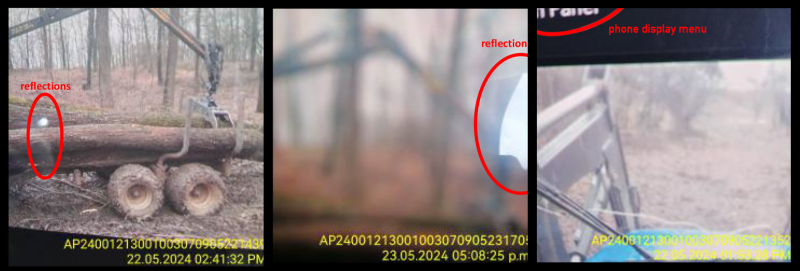Nearly one-third of Romanian territory is covered with forests composed of a variety of tree species, and these forests are considered one of the three most important 'lungs of Europe,' alongside Belarusian forests and a rainforest in Bosnia.
Romania's forests are threatened by illegal logging and poor forest management practices. According to the country’s Ministry of the Environment, Waters, and Forests, the amount of wood logged in Romanian forests is double the legal limit. Data indicates that nearly 20 million cubic meters of wood are illegally harvested each year.
To curb illegal logging, the tracking system, known as SUMAL, records details of cut lumber and requires truck drivers to submit photos of every load they transport to verify its legality. However, drivers frequently upload fake photos or reuse the same image multiple times, and SUMAL fails to detect these duplicates."
An OCCRP investigation in April revealed that a transport company owned by Austrian wood panel giant Kronospan had submitted what appeared to be duplicate images for hundreds of wood transports.
Following the report, Romania’s Environment Ministry vowed to crack down on the practice, which violates European Union timber traceability laws.
Nevertheless, using Artificial Intelligence to analyze over 30,000 transports submitted between April and June, OCCRP reporters uncovered hundreds of fraudulent photos uploaded by dozens of companies across Romania.
“The images contain traces of digital display pixelation and blockiness, display/phone frames, regions outside the depicted display, and perspective distortions due to the camera’s position against hardcopy photos,” explained Cătălin Grigoraș, director of the University of Colorado’s National Center for Media Forensics, who analyzed the suspicious photos flagged by OCCRP.

Rise Project
In addition to altered images, OCCRP reporters found blank photos with varying colors, car parts or interiors, white papers, pieces of furniture, and even selfies submitted to the system.
Among the fraudulent cases were dozens of transports commissioned by Romsilva, the state-owned forest agency responsible for managing more than three million hectares of public forests in Romania.
Grigoraș’s analysis showed that in the case of Romsilva, the same photo of a truck was used for different transports organized on different days. In other cases the expert identified the clones by noticing that screens displaying photos on another phone were photographed.
Romsilva said in an email to OCCRP that the employees "will be warned about the reported irregularities, and in the event that they are repeated, they will bear the legal consequences." The management of the state forest agency insisted that the irregularities were caused by human error and that nothing illegal was done.
The Romanian Environmental Ministry said that it plans to incorporate AI into its upgraded version of the wood tracking system, so that SUMAL could potentially discover in real time if a photo is real or a clone.
"The option to analyze in real time the photos uploaded to SUMAL, as well as the other reported data, will be examined in the business analysis that will be done in preparation for the development of the SUMAL 3.0 application suite," the ministry said.
The ministry tested last November the artificial intelligence platform Google Vertex AI, which analyzed all wood shipments registered in SUMAL. This resulted in seven criminal investigations, fines and confiscations of wood by the Forest Guard worth more than $930,000.






